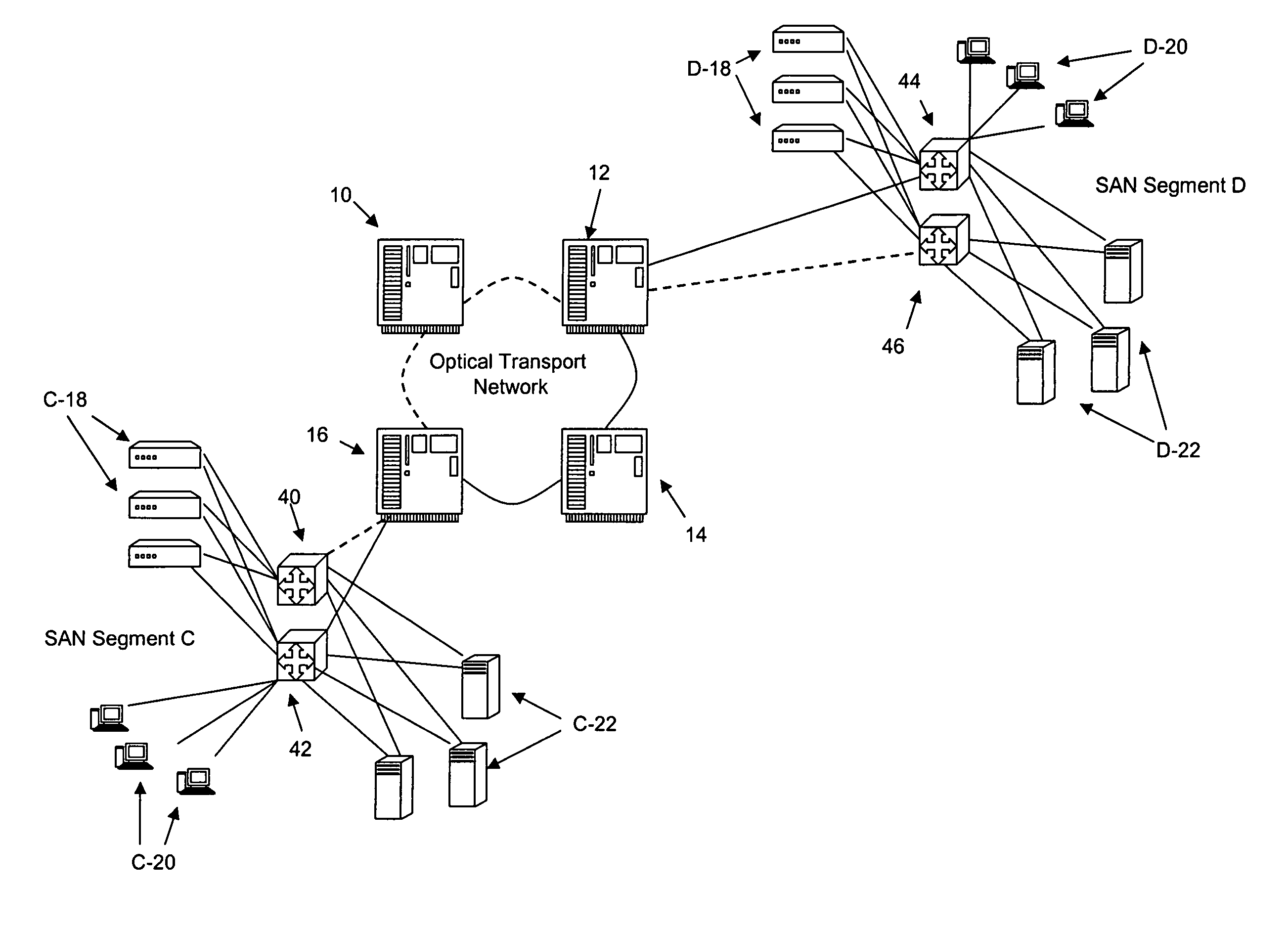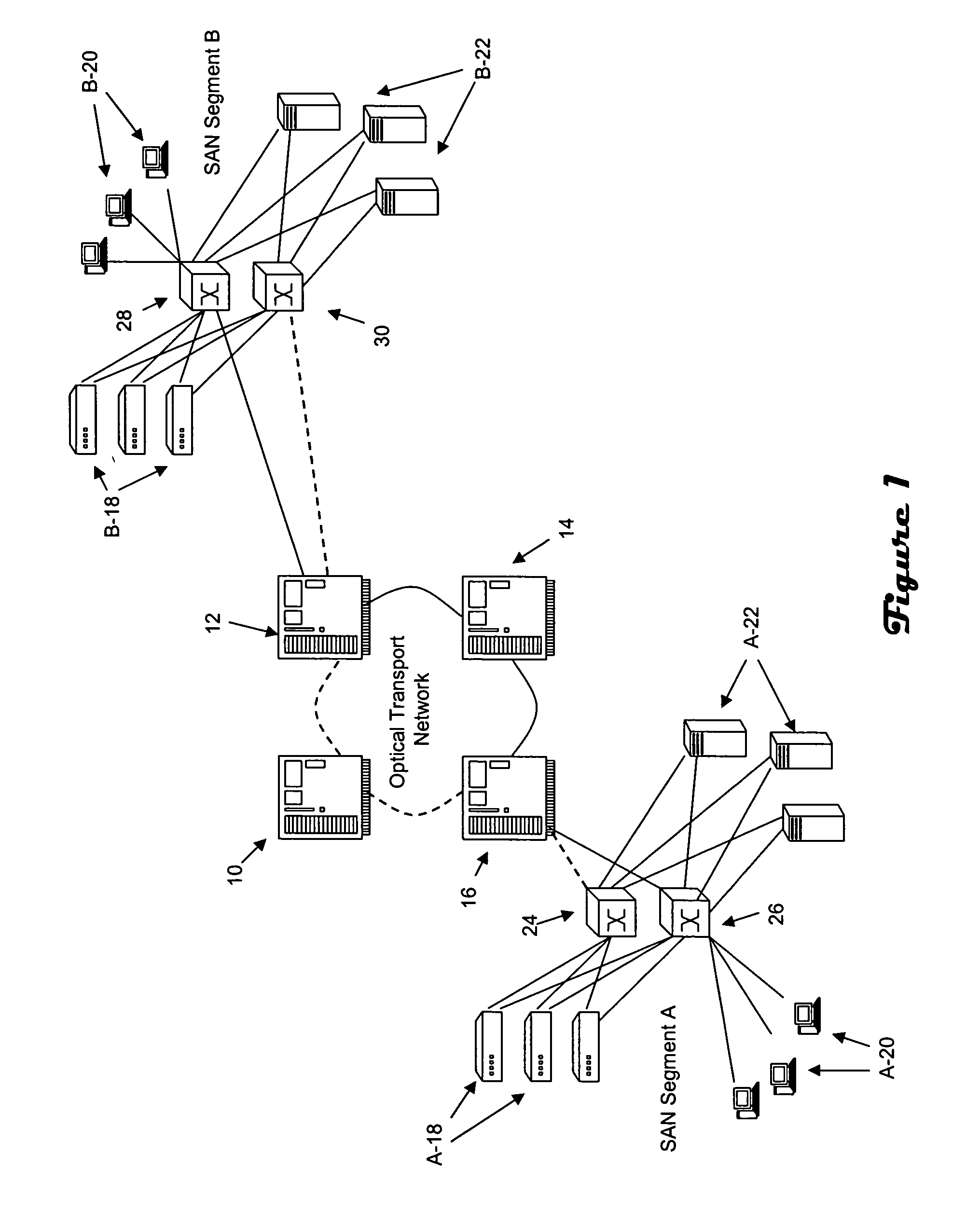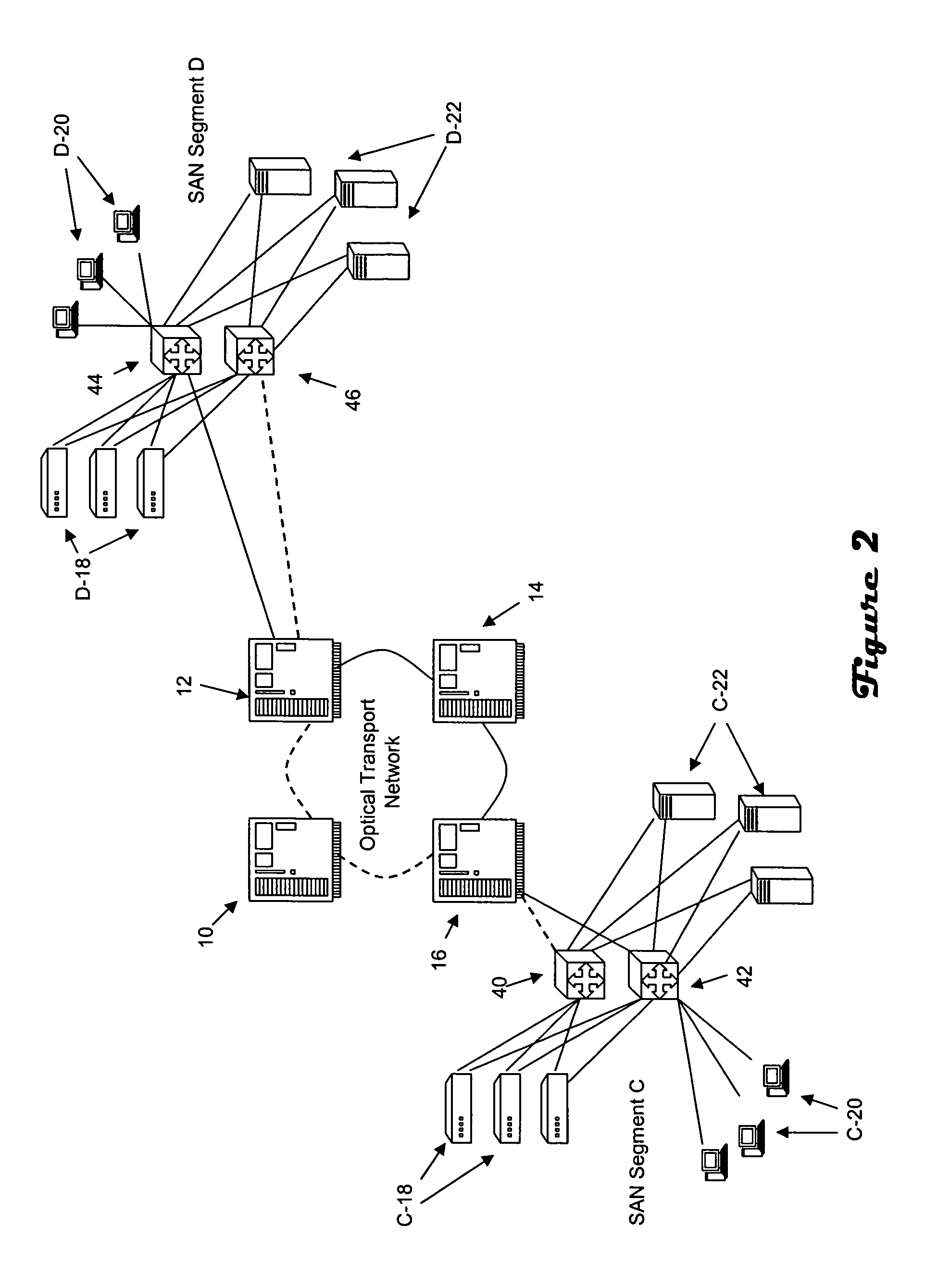Automated network to SAN topology linkage
a network topology and automatic technology, applied in the field of network communication, can solve the problems of manual processes that are prone to human error, and no practical technique for auto-discovery of linkage between san and network topologies, and achieve the effects of reducing the likelihood of human error causing inaccurate mapping, facilitating recalculation of accurate mappings, and facilitating localization and troubleshooting connectivity problems
- Summary
- Abstract
- Description
- Claims
- Application Information
AI Technical Summary
Benefits of technology
Problems solved by technology
Method used
Image
Examples
Embodiment Construction
[0013]Referring to FIG. 1, segments A, B, of a SAN are interconnected via an optical transport network. The optical transport network includes optical switches 10, 12, 14, 16 which are connected in a SONET / SDH ring architecture. It should be recognized however that the optical switches could alternatively be connected in a mesh architecture. Each SAN segment includes servers 18, hosts 20 and storage arrays 22 that are interconnected via Fibre Channel switches 24, 26, 28, 30. The Fiber Channel switches provide connectivity between devices in the SAN segment, and also to the optical network. The Optical segments may employ the Generic Framing Procedure (“GFP”) protocol which includes an encapsulation method that allows Fibre Channel SAN traffic to be carried efficiently over SONET / SDH networks.
[0014]The optical transport network is transparent to the SAN devices. In particular, SAN devices have sufficient information to identify other devices in the SAN, including devices in other SAN...
PUM
 Login to View More
Login to View More Abstract
Description
Claims
Application Information
 Login to View More
Login to View More - R&D
- Intellectual Property
- Life Sciences
- Materials
- Tech Scout
- Unparalleled Data Quality
- Higher Quality Content
- 60% Fewer Hallucinations
Browse by: Latest US Patents, China's latest patents, Technical Efficacy Thesaurus, Application Domain, Technology Topic, Popular Technical Reports.
© 2025 PatSnap. All rights reserved.Legal|Privacy policy|Modern Slavery Act Transparency Statement|Sitemap|About US| Contact US: help@patsnap.com



